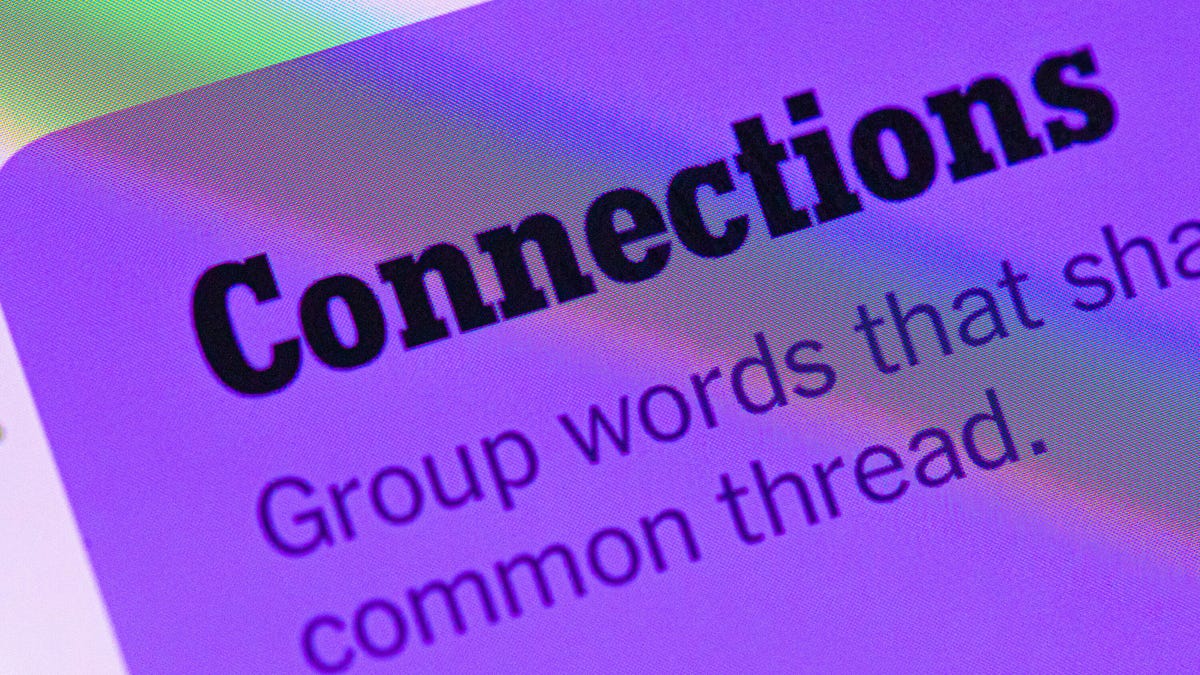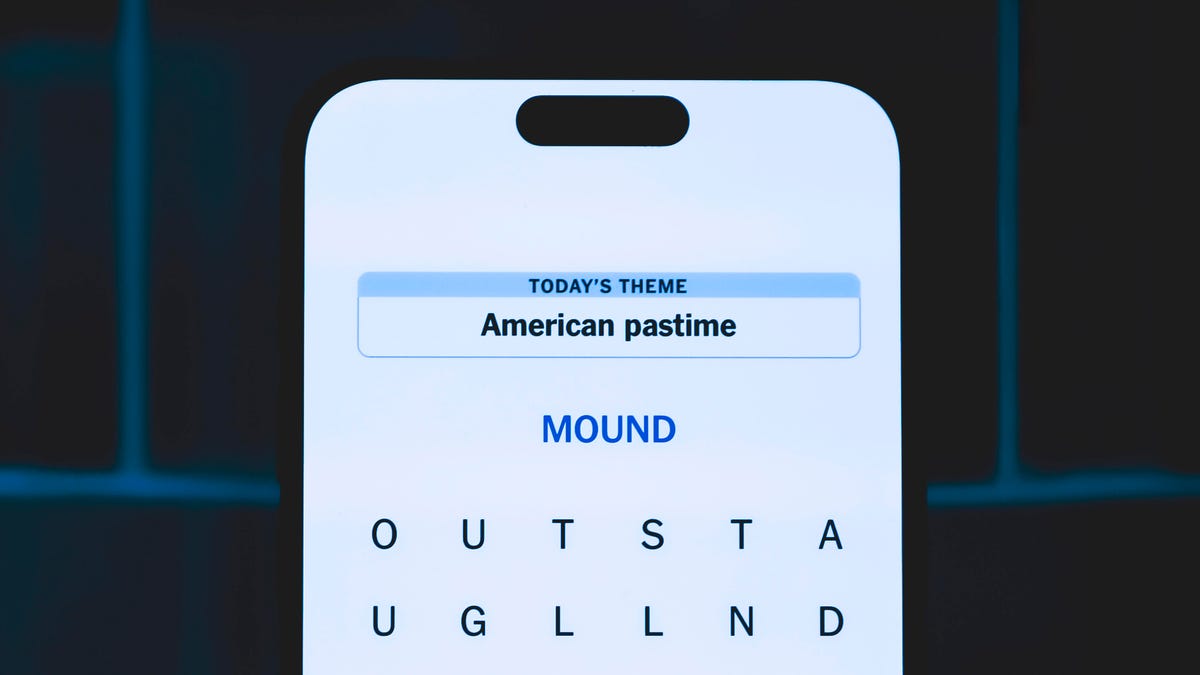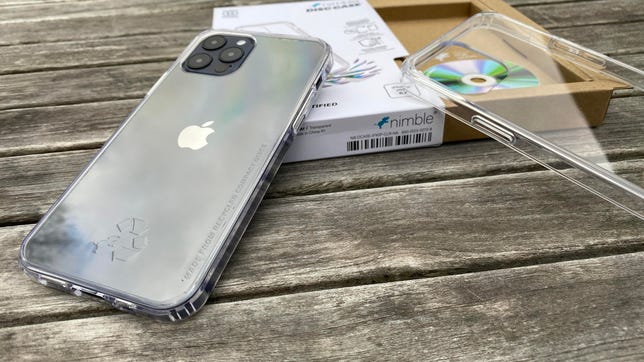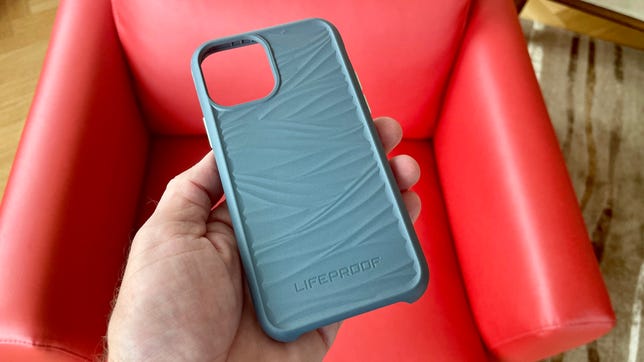Technologies
Best Eco-Friendly iPhone 12 and 12 Pro Cases
Protect your phone while protecting the Earth with these environmentally friendly phone cases.

This story is part of Tech for a Better World, stories about the diverse teams creating products, apps and services to improve our lives and society.
Within the past few years, many companies have began making great strides in producing more sustainable, eco-friendly products. Though the tech industry still has a lot of catching up to do, eco-friendly iPhone cases are on the rise. These iPhone cases, made from recycled and/or biodegradable materials, are more than capable of protecting your phone while helping the environment.
Biodegradable cases also won’t harm the environment for years and years after you’re done using them. Some of the cases listed below are made out of both recycled plastic and plant-based materials that are biodegradable.
Eco cases can look and feel slightly different from standard thermoplastic polyurethane, or TPU, cases — particularly the wooden ones — but most people wouldn’t even realize you were using an eco-friendly case unless you told them. Many offer good drop protection, and all the cases on this list are compatible with wireless chargers.
It’s also worth noting that many of these cases are available for earlier iPhone models, including the iPhone 11 and iPhone XS, and many of those cases are discounted.
Read more: Best iPhone 12 and 12 Pro Cases
Moment’s iPhone 12 case is thin and comes with a soft-to-the-touch texture. It is made out of biodegradable materials so the body is compostable after the polycarbonate parts are removed. It can be tossed in your compost bin when you are done with the product.
You know all those compact discs you no longer listen to? Nimble makes translucent iPhone cases out of them. They’re a little pricey at $50, but some of us like the idea of protecting the latest technology with recycled technology and don’t mind paying a little extra for that. They have antimicrobial protection, are scratch-resistant and aren’t supposed to turn yellow over time. While the Disc Case is slim, it’s rated for 6-foot drop protection.
Incipio’s Organicore cases are made with 100% compostable and biodegradable materials and also have eco-friendly packaging. Organicore cases offer 8-foot drop protection and are available in three color options: black, natural and eucalyptus (pictured here). They look and feel similar to the Torro Eco Cover cases and it’s really a toss-up between the two brands. The Torro’s main advantage is that it comes in more eye-catching colors — the red and blue do pop — and currently costs less.
Note that Amazon is discounting certain colors of the Organicore case (the natural version is $10), but the green version shown is $15. Also, the Organicore is available in a iPhone 12 Pro Max version, but it costs more.
Casetify recently launched its new Ultra Compostable Cases. Compared to its earlier Conscious cases, this new eco model increases the drop-protection to 6.6 feet and is made with the 100% compostable, plant-based material Ecotify, the company’s proprietary blend of biopolymers, starch and bamboo grain.
Casetify also says the packaging is made of 100% sustainable, recycled and compostable materials including eco-friendly, nontoxic ink made from soybeans. The case has a raised edge design to protect the screens and is available in seven color options. The price is high at $66, but the case is customizable with personalization and prints.
This is the only case on the list I haven’t yet tried, but the Amazon user reviews for it are positive and it costsonly $9. Eplantita says its case is built from 100% biodegradable wheat straw and recyclable TPU. It fully covers your phone and has raised edges, so that should help with any face-down drops. It’s available in several color options.
Lifeproof’s Wake case is made out of recycled ocean plastic (85% of it anyway). It’s attractively designed but I wouldn’t call it super tough — it isn’t enclosed at the bottom and has 6-foot drop protection. It comes in four colors, including this teal variant, which I happen to like best. (If you’re going to get a «green» case, it might as well be green.)
Tech 21 offers a few different eco-friendly case options for the iPhone 12 series. The cases are made of biodegradable materials and have a grippy texture that helps you avoid having your phone slip out of your hand. The Eco Slim model is available in a few different color options and offers good drop protection (it’s rated for up to 10-foot drops) while also being relatively slim. Prices vary a bit by the type of iPhone 12 you have but most versions cost $15 or less.
KerfCase has been making handmade wooden cases for a while, and its new Plywood case is not only more durable but less expensive than some, starting at $50, with 6-foot drop protection and a limited lifetime repair warranty. I like it better than other cases made of wood that I’ve tried. It’s also worth noting that Apple’s MagSafe charger will stick to the back of it, and KerfCase sells matching charging docks for the Apple MagSafe charger (yes, it’s an accessory for an accessory).
Read more
- iPhone 12 Pro and Pro Max vs. iPhone 11 Pro and Pro Max: Specs and Features
- iPhone 12’s Four Models Compared
- iPhone 12 Specs You Should Care About
- Best Headphones and Wireless Earbuds for iPhone 12
- MagSafe Accessories for iPhone 12 are Here
- Best iPhone 12 Chargers Starting at $10
- Best Cheap True-Wireless Earbuds in 2023
- Best Wireless Car Charger and Mount in 2023
- Best iPhone 2022: Apple Currently Sells 7 Different Models. Here’s How to Pick One
- Best iPhone 13 Case
Technologies
Today’s NYT Connections Hints, Answers and Help for Dec. 14, #917
Here are some hints and the answers for the NYT Connections puzzle for Dec. 14, #917.

Looking for the most recent Connections answers? Click here for today’s Connections hints, as well as our daily answers and hints for The New York Times Mini Crossword, Wordle, Connections: Sports Edition and Strands puzzles.
Today’s NYT Connections puzzle is an odd one in that the purple category, usually the toughest, was the easiest — if you know a certain group of fictional animals. If you need help sorting them into groups, you’re in the right place. Read on for clues and today’s Connections answers.
The Times now has a Connections Bot, like the one for Wordle. Go there after you play to receive a numeric score and to have the program analyze your answers. Players who are registered with the Times Games section can now nerd out by following their progress, including the number of puzzles completed, win rate, number of times they nabbed a perfect score and their win streak.
Read more: Hints, Tips and Strategies to Help You Win at NYT Connections Every Time
Hints for today’s Connections groups
Here are four hints for the groupings in today’s Connections puzzle, ranked from the easiest yellow group to the tough (and sometimes bizarre) purple group.
Yellow group hint: Butter up.
Green group hint: Like The Little Match Girl.
Blue group hint: Letter that makes no sound.
Purple group hint: Oink!
Answers for today’s Connections groups
Yellow group: Lay it on thick.
Green group: Hans Christian Anderson figures.
Blue group: Silent «L.»
Purple group: Fictional pigs.
Read more: Wordle Cheat Sheet: Here Are the Most Popular Letters Used in English Words
What are today’s Connections answers?
The yellow words in today’s Connections
The theme is lay it on thick. The four answers are fawn, flatter, gush and praise.
The green words in today’s Connections
The theme is Hans Christian Anderson figures. The four answers are duckling, emperor, mermaid and princess.
The blue words in today’s Connections
The theme is silent «L.» The four answers are calf, chalk, colonel and would.
The purple words in today’s Connections
The theme is fictional pigs. The four answers are Babe, Napoleon, Piglet and Porky.
Don’t miss any of our unbiased tech content and lab-based reviews. Add CNET as a preferred Google source.
Technologies
Today’s NYT Strands Hints, Answers and Help for Dec. 14 #651
Here are hints and answers for the NYT Strands puzzle for Dec. 14, No. 651.

Looking for the most recent Strands answer? Click here for our daily Strands hints, as well as our daily answers and hints for The New York Times Mini Crossword, Wordle, Connections and Connections: Sports Edition puzzles.
Today’s NYT Strands puzzle may leave you wanting to make a reservation at a fancy restaurant. Some of the answers are difficult to unscramble, so if you need hints and answers, read on.
I go into depth about the rules for Strands in this story.
If you’re looking for today’s Wordle, Connections and Mini Crossword answers, you can visit CNET’s NYT puzzle hints page.
Read more: NYT Connections Turns 1: These Are the 5 Toughest Puzzles So Far
Hint for today’s Strands puzzle
Today’s Strands theme is: Pricy pairing.
If that doesn’t help you, here’s a clue: May I see the menu?
Clue words to unlock in-game hints
Your goal is to find hidden words that fit the puzzle’s theme. If you’re stuck, find any words you can. Every time you find three words of four letters or more, Strands will reveal one of the theme words. These are the words I used to get those hints but any words of four or more letters that you find will work:
- FLOP, POLL, POLLS, RARE, CARE, HARE, SURE, SPAT, SPATS, PATS, CRUST, RUST
Answers for today’s Strands puzzle
These are the answers that tie into the theme. The goal of the puzzle is to find them all, including the spangram, a theme word that reaches from one side of the puzzle to the other. When you have all of them (I originally thought there were always eight but learned that the number can vary), every letter on the board will be used. Here are the nonspangram answers:
- CRAB, RIBEYE, SHRIMP, LOBSTER, SCALLOP, SIRLOIN
Today’s Strands spangram
Today’s Strands spangram is SURFANDTURF. To find it, start with the S that’s the far-left letter on the top row, and wind down.
Don’t miss any of our unbiased tech content and lab-based reviews. Add CNET as a preferred Google source.
Technologies
Can My iPhone 17 Pro Match a 6K Cinema Camera? I Teamed Up With a Pro to Find Out
I put a video shoot together to see just how close an iPhone can get to a pro cinema setup.

The iPhone 17 Pro packs a powerful video setup with a trio of cameras, large image sensors (for a phone), ProRes raw codecs and Log color profiles for advanced editing. It makes the phone one of the most powerful and dependable video shooters among today’s smartphones.
Apple often boasts about famous directors using the iPhone to shoot films and music videos. The company even records its event videos for new products with the iPhone.
But is the iPhone really good enough at shooting video to replace a traditional cinema camera? To see how good the iPhone 17 Pro is for professional use, I gave it a proper test.
I put together a video shoot where I pitted the $1,000 iPhone against a full professional cinema camera rig, worth thousands of dollars, to see just how well Apple’s phone can hold its own. I planned a video production at my favorite coffee roaster in Edinburgh, called Santu, which is based in a stunning building that I knew would look amazing on camera.
To give both cameras the best chance, I worked with Director of Photography Cal Hallows, who has been responsible for production on major shoots around the world, working with brands including Aston Martin, the BBC, IBM and Hilton Hotels.
Here’s what happened.
Our filming equipment
We didn’t use any external lenses with the iPhone; instead, we relied on either the built-in main, ultrawide or telephoto options. I shot my footage using the BlackMagic Camera app. I had a Crucial X10 external SSD since I was recording in Apple’s ProRes raw codec, which creates large files.
I also had a variable neutral density filter to achieve a consistent shutter speed. For some shots, I used Moment’s SuperCage to help give me a better grip — and therefore smoother footage. But for other shots, I just used the phone by itself to make it easier to get into tight spaces. More on that later.
The iPhone’s competition was the $3,300 BlackMagic Pyxis 6K. It’s a professional cinema camera with a full-frame 6K resolution image sensor and raw video capabilities. I paired that with some stunning pro cine lenses, including a set of Arles Primes, the XTract Probe lens from DZO Film and a couple of choice cine primes from Sigma. It’s a formidable and pricey setup for any cinematographer.
The shoot day
We shot over the course of a single day. I’d already created a rough storyboard of the shots I wanted to get, which helped me plan my angles and lens choices. I wanted to try and replicate some angles directly with both cameras.
This shot of the store room being opened (above), for example — was a lovely scene, and I didn’t see much difference in quality between the iPhone’s video and the BlackMagic’s. This was the case with a few of the scenes we replicated. Apple’s ProRes raw codec on the iPhone provided a lot of scope for adjusting the color, allowing us to create beautiful color grades that looked every bit as striking as footage from the Blackmagic camera.
Sure, you could tell that they were different, but I couldn’t honestly say if one was better than the other.
Other shots were more difficult to replicate. I love this low-angle of the roastery owner, Washington, pulling his trolley through the scene. On the iPhone, the main lens wasn’t wide enough to capture everything we wanted but switching to the ultrawide was too much the other way and we ended up having spare gear and other people in the frame.
This made several shots a challenge to replicate as the fixed zoom ranges of the iPhone simply didn’t translate to the same fields of view offered by our lenses on the BlackMagic camera. As a result, getting the right framing for shots from the iPhone was trickier than I expected. But focal length wasn’t the only reason using «real» lenses was better.
The DZO Arles Primes are awesome cinema lenses that offer wide apertures that allowed us to shoot with gorgeous natural bokeh. We used this to our advantage on several shots where we really wanted the subject to be isolated against an out-of-focus background.
Secret weapons
That was especially the case when we used our secret weapon: the DZO Films Xtract probe lens. This bizarre-looking, long, thin lens gives both a wide-angle perspective coupled with a close focusing distance.
I loved using the probe lens for this shot, particularly where we’ve focused on exactly where Washington was using the bean grinder. I tried to replicate it on the iPhone using the close-focusing ultrawide lens and the shot looks good, but it lacks the visual sophistication that I can get from a big, professional camera. Especially because the lack of background blur makes it easier to see distracting background items stored under the counter that are otherwise «hidden» in the blur on the main camera.
But the iPhone has its own secret weapon, too. Its size. The tiny dimensions of the iPhone — even with a filter and the SSD crudely taped to it — is so small that we were able to get shots that we simply couldn’t have achieved with the big cinema camera.
In particular, this shot, where I rigged the iPhone to an arm inside the cooling machine so that it travelled around as the beans were churned. I love this shot — and a top-down view I shot of the arms turning beneath. Both angles give this incredible energy to the film and I think they are my favourite scenes of the whole production. It wasn’t easy to see the phone screen in these positions but SmallRig’s wireless iPhone monitor made it much easier to get my angles just right. Trying to rig up a large, heavy camera and lens to get the same shots was simply out of the question.
How well did the iPhone compare?
I’m really impressed with both cameras on this project, but my expert Director of Photography, Cal, had some thoughts, too.
«The thing I really found with the iPhone,» Cal explained, «was simply the creative freedom to get shots that I’d have never had time to set up. There’s only so long in a day and only so long you have access to filming locations or actors, so the fact that you can just grab your iPhone and get these shots is amazing.»
«I have used my iPhone on professional shoots before. One time in particular was when I was driving away from set and I saw this great sunset. If I’d have spent time rigging up my regular camera, I’d have missed the sunset. So I shot it on my phone and the client loved it — it ended up being the final shot of the film. At the end of the day, a good shot is a good shot and it doesn’t matter what you shot it with,» said Cal.
So was it all good for the iPhone?
«The depth of field and the overall look of the cinema lenses still come out on top — you’re just not going to get that on a phone,» explained Cal. «When it came to grading the footage, I had to use a lot of little workarounds to get the iPhones to match. The quality quickly started to fall apart in certain challenging scenes that just weren’t a problem with the BlackMagic.»
So it’s not a total win for the iPhone, but then, I never expected it to be. The iPhone was never going to replace the pro camera on this shoot, but it instead allowed us to augment our video with shots that we would otherwise never have gotten.
I love the creative angles we found using just the phone, and while Cal struggled to balance its colors as easily, the footage does fit in nicely with the rest of the video and makes it more dynamic and engaging as a result.
And that’s not to say the shots we didn’t use from it weren’t good. I’m actually impressed with how the iPhone handled most of the things we threw at it.
So don’t assume that if you want to get into filmmaking, you need to drop tens of thousands on a pro cinema camera and a set of cine primes. Your iPhone has everything you need to get started, and it’ll let you flex your creativity much more easily.
Our days of shooting, editing and grading have proven that the iPhone isn’t yet ready to be the only camera you need on a professional set. But mix its small size in with your other cameras, and then you’ve got yourself a truly powerful production setup.
-

 Technologies3 года ago
Technologies3 года agoTech Companies Need to Be Held Accountable for Security, Experts Say
-

 Technologies3 года ago
Technologies3 года agoBest Handheld Game Console in 2023
-

 Technologies3 года ago
Technologies3 года agoTighten Up Your VR Game With the Best Head Straps for Quest 2
-

 Technologies4 года ago
Technologies4 года agoBlack Friday 2021: The best deals on TVs, headphones, kitchenware, and more
-

 Technologies4 года ago
Technologies4 года agoVerum, Wickr and Threema: next generation secured messengers
-

 Technologies4 года ago
Technologies4 года agoGoogle to require vaccinations as Silicon Valley rethinks return-to-office policies
-

 Technologies4 года ago
Technologies4 года agoOlivia Harlan Dekker for Verum Messenger
-

 Technologies4 года ago
Technologies4 года agoiPhone 13 event: How to watch Apple’s big announcement tomorrow








